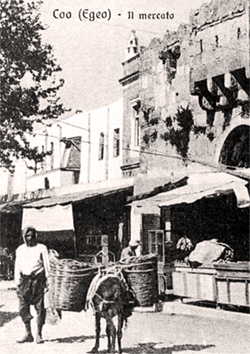scarica l’articolo in formato pdf: Il piano regolatore di Kos del 1934
.
A preliminar version of this contribution was published in Greek at the International Congress Νεές πόλεις πάνο σε παλιές, organized in Rhodes in 1993 by ICOMOS and the Dodecanese Ephorates. A syntesis was then published also by M. Livadiotti in Livadiotti, Rocco 1996, pp. 86-91. In the 1934 town plan for Kos, the considerable amount of free area corresponding to the archaeological zones excavated by Italian archaeologists is striking. Archival documents show that this peculiarity is the result of a deliberate project and that it is connected with Mario Lago, the Governor of Dodecanese since 1923, who was so deeply interested in classical culture to collaborate with Alessandro Della Seta, Federico Halbherr, Enrico Paribeni, Amedeo Maiuri, Giulio Iacopi and Luciano Laurenzi, to promoting with them in 1928 the foundation of the “Archaeological-Historical Institute FERT” at Rhodes. In 1933 Kos was almost totally devastated by a disastrous earthquake and the Italian government charged the architect R. Petracco with elaborating a new town plan; before the plan was drawn up, Lago agreed with Della Seta in charging Laurenzi with carrying out an archaeological survey and sondages throughout the city in order to identify the most promising areas for future investigations. So, eight large zones were set aside for the creation of as many archaeological parks. Oddly enough, therefore, an Archaeological Service was given a decision preceding a town plan and the new Kos was planned along unusual lines that can be identified in the idea of the “archaeological city”. The plan turned out to be an avant-garde model from the point of view of conservation, even compared with what was taking place at the same time in Italy, where there was an active debate on the problem and the relative legislation was very progressive for the period. The case of Kos has a significant precedent at Rhodes in the Twenties in the episode of the protection of the Moslem and Jewish cemeteries and a creation of a protective band around the walled city. In that story, as documents can demonstrate, Maiuri’s role is not to be underestimated: in fact the archaeologist was really sensitive to the new concerns of restoration and in 1931 participated in Athens, with Della Seta, Pernier, Pace, Iacopi, to the International Conference on Restoration, giving an active contribution to the discussion.

